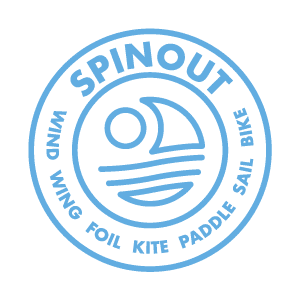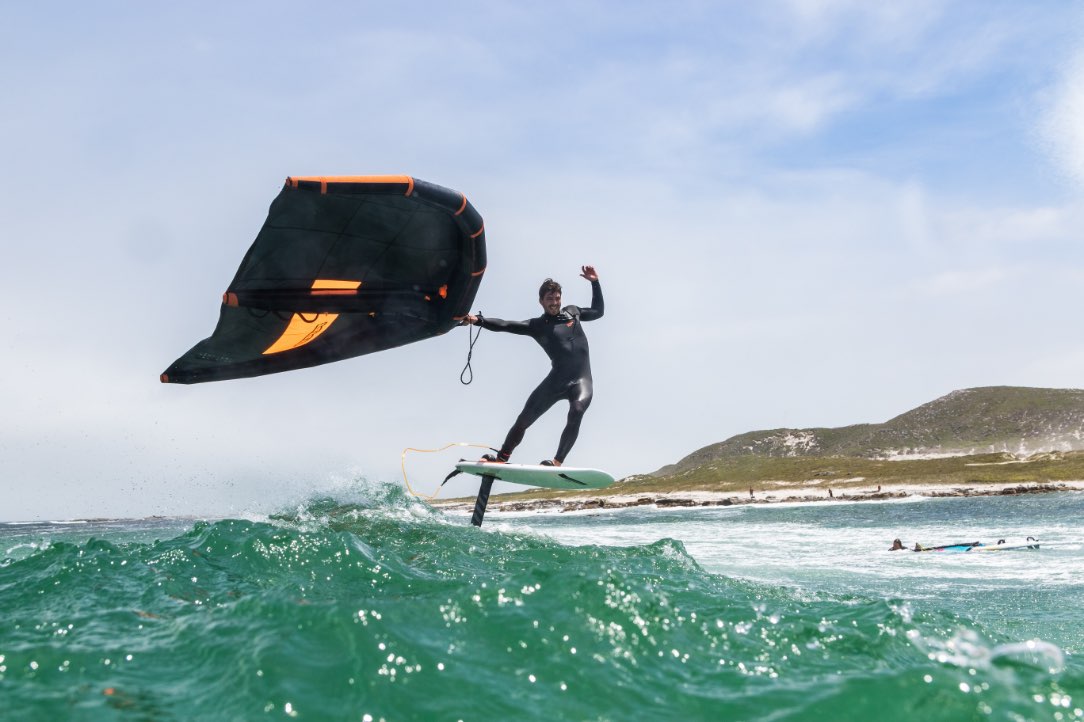Try Wingfoil in Hyères
The hottest new watersport:
Wingfoil!
A “Wing” is a handheld wing that you hold using a boom or handles while riding a foil board (SUP foil, surf foil or kite foil).
Secured with a leash, this innovation allows the rider to discover new sensations with great freedom of movement. WING FOIL is already enjoying well-deserved success. Usable with SUP foil, Wind Foil, Surf Foil or Kite Foil, it is THE new trend in water board sports.
Group WING Lesson
2h / session
€120
€130 in July – August
Max. 2 people
In shallow water or by boat
Group WING Lesson
2h / session
€120
€130 in July – August
Max. 2 people
In shallow water or by boat
Private Wing Lesson:
€220 per 1h30 session
Wing Course
Group
5 sessions of 2h
€540
€585 in July – August
Max. 2 people
In shallow water or by boat
Wing Foil
Also known as wingfoil, wingsurf or wingfoiling. They’re showing up on all the kite, surf and windsurf spots — and this is just the beginning! More and more people are looking to get started with wingfoil in Hyères, the surf sport with a wing sail: a true mix of windsurfing and kitesurfing, floating above the water thanks to the rise of foils. All watersports brands are now developing this new gear, and with increasingly accessible, easy-to-use and beginner-friendly foils, a brand-new discipline has been born!
The Different Types of Foil Boards
SUPfoil
SUPfoil (or Stand-Up Paddle Foil) is an innovative variation of traditional stand-up paddleboarding. In this discipline, a foil wing is attached beneath the board, allowing the rider to lift above the water surface as speed increases. The main advantage of this technique is the near-frictionless glide sensation it provides, enabling users to surf smaller waves or even flat water, while using a paddle to propel and steer the board.
Surf-Foil
Surf-Foil is an adaptation of traditional surfing where, once again, a foil wing is attached beneath the board. This setup allows surfers to glide above the water, adding a new dimension to the surfing experience. The main advantage of Surf-Foil is that it enables surfers to catch and ride waves that would normally be considered too small or too soft for traditional surfing. It’s a discipline that requires a certain level of skill, as controlling the foil demands a different technique than classic surfing.
Wind Foil
Wind Foil is an evolution of traditional windsurfing. As with SUPfoil, a foil wing is mounted underneath the board, allowing the rider to “fly” above the water once a certain speed is reached. Thanks to reduced friction, riders can achieve higher speeds and enjoy a unique gliding sensation, even in lighter wind conditions. The sail’s mast is still used to catch the wind and propel the board forward.
Kitefoil
Kitefoil combines the art of kitesurfing with foil technology. Instead of gliding on the water’s surface with a traditional kiteboard, the kitefoiler uses a board equipped with a foil to lift above the surface. This results in a smoother ride with less resistance, allowing for higher speeds and the ability to ride in lighter wind conditions. Additionally, the feeling of flying above the water offers a unique experience that many kitesurfers love.
Our tips for practicing wingfoil
To get started:
For an easy start, choosing the right board is essential! A large board with volume greater than your weight. If you weigh 80 kg, you can start with a board of 120/130L. This will give you better floatability, allowing you to start on your knees to gain some speed before standing up. As you progress, you’ll quickly be able to do a waterstart, similar to windsurfing, and eventually use a board with much lower volume for better maneuverability and responsiveness.
The Gear:
La wing peut se faire depuis un SUP (Stand-Up Paddle) ou un grand longboard, mais c’est très lent, on va pas se mentir, l’intérêt est bien de la combiner au foil !!! Pour prendre de la vitesse et aller rider les vagues, mieux vaut donc la combiner avec le foil. La surface de l’aile pourra être entre 1200 cm² et 1800 cm² (portance), la longueur du mât n’est pas si importante que ça au départ, mais mieux vaut rester dans les standards, surtout pour débuter la wing foil à la Presqu’île de Giens !
Hyper simple à embarquer partout, car ça tient dans un petit sac 2 fois plus petit que celui d’un kite, incomparable par rapport à celui du windsurf : pas besoin de mât ni de wishbone 😉. Pour la taille de l’aile, la surface standard est environ 4m², tu trouves cependant des ailes de 2,5m² à 6m², à adapter en fonction de la force du vent et de ton poids et de la surface de ton aile de wing. Cela fait pas mal de paramètres, aussi les conseils d’un pro de notre école de voile à Hyères ne sont pas de trop pour conjuguer toutes ces déclinaisons entre elles, surtout au début.
Pour les grandes tailles, si elle peut avoir une fenêtre c’est un plus pour voir ce qui se passe sous ton vent. Le leash est accroché à ton poignet et à l’avant de la wing. Un autre à la planche…Accessoire indissociable : Ze pompe ! Parfois livrée avec l’aile à l’achat (mais pas toujours !) attention de bien se renseigner car les embouts de gonflage sont souvent différents selon les marques… Il existe des kits adaptables 😉
Weather Conditions and Safety
To begin wing foiling, you need a calm sea—ideally flat water!
Look for a clear body of water with no downwind obstacles and a shallow area where you can walk back if needed (especially for your first sessions). The Spinout spot offers the ideal setting to start winging, along with other activities like windsurfing and stand-up paddleboarding.
As for wind strength, around 15 knots is ideal, preferably side-shore (parallel to the beach), and up to 20–25 knots maximum when starting.
Despite being relatively accessible, a complete introductory course at a sailing school is strongly recommended—it will speed up your learning process.
Soon enough, you’ll be able to handle stronger winds as you progress. Sunshine and warm water are also great learning conditions 😉
A helmet, neoprene wetsuit and booties are essential for safe practice and to avoid potential injuries like cuts, scratches, or bumps caused by the gear or surroundings (stubbed toes, car doors in the parking lot, foil knocks, sea urchins at the exit… there are as many risks as stories!).
Why practice wingfoil?
If you’ve always dreamed of having wings and you love windsurfing or kitesurfing, you’ll love wingfoil! Choose the right board size and your wing before jumping in the water with the others! Thanks to professional equipment (leash, helmet, and neoprene wetsuit…), you’ll be perfectly safe while enjoying the sport! Spinout also guarantees a fun and easy wingfoil lesson! Communication is key when learning this sport similar to kitesurfing. Discover our course prices and start your adventure! At first, it may seem difficult, but don’t worry — you’ll quickly fall in love with the feeling of freedom and excitement that this wing board provides. Go ahead and book your session now — see you soon!


